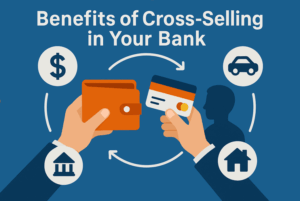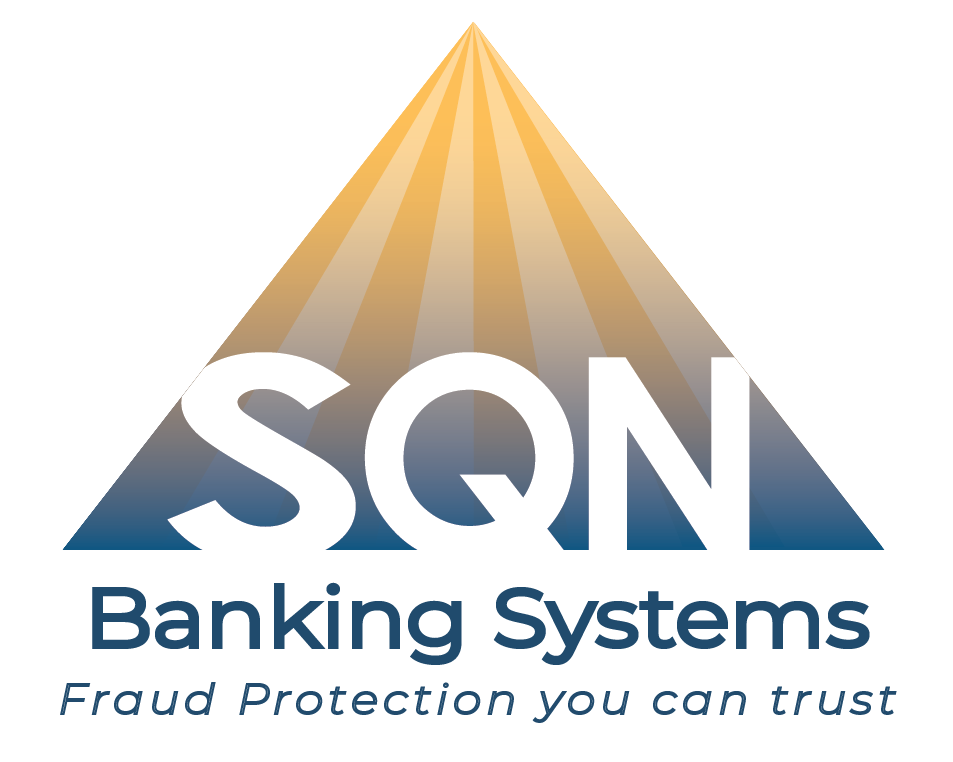Benefits of Cross-Selling in Your Bank

Cross-selling in banking is a huge opportunity that many banks are missing. Studies show it’s much easier and more profitable to sell to an existing customer than to attract a new one. In fact, banks have a 60–70% success rate with current customers compared to 5–20% with new prospects.
But cross-selling isn’t about pushing more products. When done well, it turns a bank from a transactional provider into a financial partner, deepens customer relationships and unlocks new revenue. For community banks and credit unions this is especially powerful: deepening existing relationships reduces acquisition costs, improves retention and solidifies long term trust. This article explores the benefits of cross-selling in banking, with insights and examples for fraud, operations, compliance, IT and risk management professionals.
What is Cross-Selling in Your Bank?
The banking sector uses strategic ways to deepen customer relationships. Simply put cross-selling in banking is when a bank associate tries to sell more financial products to existing customers. This encourages customers who have already purchased one product to buy another financial service to meet their unmet banking needs and increase revenue.
Cross-selling in banking is a powerful and efficient revenue generator. Essentially it’s the successful promotion of products resulting in additional purchases by account holders, new or existing. For example a customer with a personal checking account might be offered a debit card for easier fund access.
The purpose of this goes beyond profit. Cross-selling allows banks to:
- Be a transactional partner to a financial hub
- Offer many products that meet customer needs
- Have a more resilient and diversified business model
How it differs from upselling
Cross-selling and upselling are related marketing tactics often used together but are different. Upselling is when you encourage customers to buy a more expensive or upgraded version of what they intended to buy. It focuses on amplifying the value of a single product.Cross-selling encourages customers to buy items related to or complementary to their initial purchase. Consider these differences:
- Cross-selling focus: Suggesting brand new products or services, like offering life insurance to someone who only has a savings account
- Upselling focus: Convincing customers to buy a more expensive or upgraded version of what they intended to buy
Also cross-selling broadens a customer’s portfolio across multiple products while upselling increases the value derived from a single product category. Both aim to increase sales per customer and perceived value by meeting customer needs better.
The banking industry benefits from cross-selling more than any other due to its competitive landscape. The success of any cross-selling program depends on many factors including a well defined business strategy, effective execution, regular marketing and a targeted approach.
1) Cross-Selling to Strengthen Customer Retention
Retention is one of the most obvious benefits of cross-selling. Acquiring a new customer can cost 5-7 times more than retaining a current one. For banks where switching is easier than ever due to digital competitors, loyalty is key.
Customers with multiple products are much less likely to move their accounts elsewhere. Once a customer uses one institution for checking, loans, credit cards and digital payments the effort to switch becomes too high. This creates what industry professionals call “stickiness”.
Even small improvements in retention pay off. Studies show a 5% increase in customer retention can drive profit increases of 25-95%. Cross-selling achieves this by embedding the bank into multiple aspects of a customer’s financial life. For fraud teams this means more reliable behavioral data to detect anomalies.
2) Increases Revenue Per Customer
Cross-selling increases revenue per customer. Each additional product creates a new stream of fees, interest income or transaction activity. Unlike new acquisitions which often come with heavy marketing costs, revenue from existing customers is more efficient and sustainable.
Banks that run structured cross-sell campaigns see revenue increases of 25% or more in the first 6 months. High margin products like credit cards, investment services and insurance amplify this impact. Commercial clients are particularly valuable since one relationship like a mortgage can unlock multiple opportunities for treasury services, lines of credit and fraud detection solutions.
For institutions with low return on equity from single product customers cross-selling is the path to higher profitability. It turns unprofitable relationships into profitable ones.
3) Lower Customer Acquisition Costs
Acquiring new customers is much more expensive than retaining existing ones. For banks this can mean spending up to 5 times more to attract new account holders than to serve current customers. Cross-selling leverages existing trust and eliminates high acquisition costs.
Instead of investing heavily in external advertising banks can use internal data, digital channels and frontline staff to deepen existing relationships. Selling to existing customers has a 60-70% success rate compared to the much lower 5-20% success rate with new leads. This reduces marketing costs and ensures a more efficient use of resources.
4) Builds Stronger Customer Relationships
A well executed cross-sell strategy builds trust. Customers see the bank not as a vendor but as a partner in financial well-being. Offering relevant products at the right time demonstrates understanding.
Trust grows when recommendations feel personalized. A student opening a first checking account may later need guidance on student loans or fraud protection against identity theft. A family preparing to buy a home may need a mortgage bundled with homeowners insurance. When customers see value in these connections they stay loyal.
Cross-selling also provides an opportunity to introduce security measures. Educating customers about fraud risks and including protection services in cross-sell offers increased confidence. Banks that position themselves as protectors of customer assets stand out from competitors.
5) Enhances Customer Lifetime Value (CLV)
Customer Lifetime Value (CLV) measures the total revenue a customer generates over the lifetime of the relationship. Cross-selling increases CLV by extending the length of the relationship and the number of products in use.
A single product customer might generate minimal profit or even negative returns over time. A customer with a checking account, savings account, credit card and loan is much more valuable. That customer also stays longer providing predictable revenue and opportunities for additional services.
Cross-selling essentially shifts banks away from short term transactions towards long term partnerships. The more products a customer uses the higher their lifetime value and the stronger the bank’s financial foundation.
6) Strengthening Brand Loyalty
Cross-selling contributes directly to brand loyalty by creating a one stop shop perception. Customers who can do checking, savings, lending, fraud protection and investment services under one roof are less likely to go to competitors.
This consolidation not only simplifies financial management for the customer but also makes them feel more secure with their chosen institution. A bank that meets evolving financial needs becomes a trusted partner and loyalty extends beyond individual products.
7) Enables Personalized Banking Experiences
Personalization is no longer optional in banking. Customers expect offers that reflect their life stage and unique financial circumstances. Cross-selling supports this by offering services to individual journeys – from student loans for young adults to retirement planning for older clients.
AI driven tools and customer relationship management (CRM) systems enable banks to deliver these personalized offers at scale. For example, SQN’s SENTRY: FraudSuite can help banks monitor account activity and proactively recommend fraud prevention solutions tailored to customer risk profiles. By embedding personalization into cross-sell strategies banks not only increase conversions but deliver value.
8) Supporting Digital Transformation Goals
Digital banking has transformed the way cross-selling occurs. With branch visits declining, mobile and online platforms are the primary touchpoints for customers. Banks that integrate cross-sell opportunities into their digital journeys gain a competitive advantage. Personalized offers in mobile apps, push notifications aligned to customer behavior and streamlined onboarding processes all drive adoption.
Digital cross-sell success hinges on experience quality. Research shows that if digital account opening takes more than 5 minutes, abandonment increases by 60%. Banks can turn their platforms into engagement and revenue engines by optimizing digital flows and embedding contextual marketing.
Conclusion: Why Banks Should Cross-Sell
Cross-selling is more than a revenue strategy. It’s a holistic approach to build resilient customer relationships, improve profitability and reduce acquisition costs. It also strengthens fraud detection by giving a fuller picture of customer behavior across multiple products.
For community banks and credit unions competing in a crowded market cross-selling presents a unique opportunity to deepen trust and turn customers into lifelong partners. But success is more than offering additional products. It’s data driven insights, empowered frontline staff, secure digital platforms and advanced fraud prevention systems.
At SQN Banking Systems, we believe cross-sell and fraud prevention are two sides of the same coin. By combining strategies that expand customer relationships with solutions like SENTRY: FraudSuite banks can grow sustainably while protecting their most valuable asset – trust.
